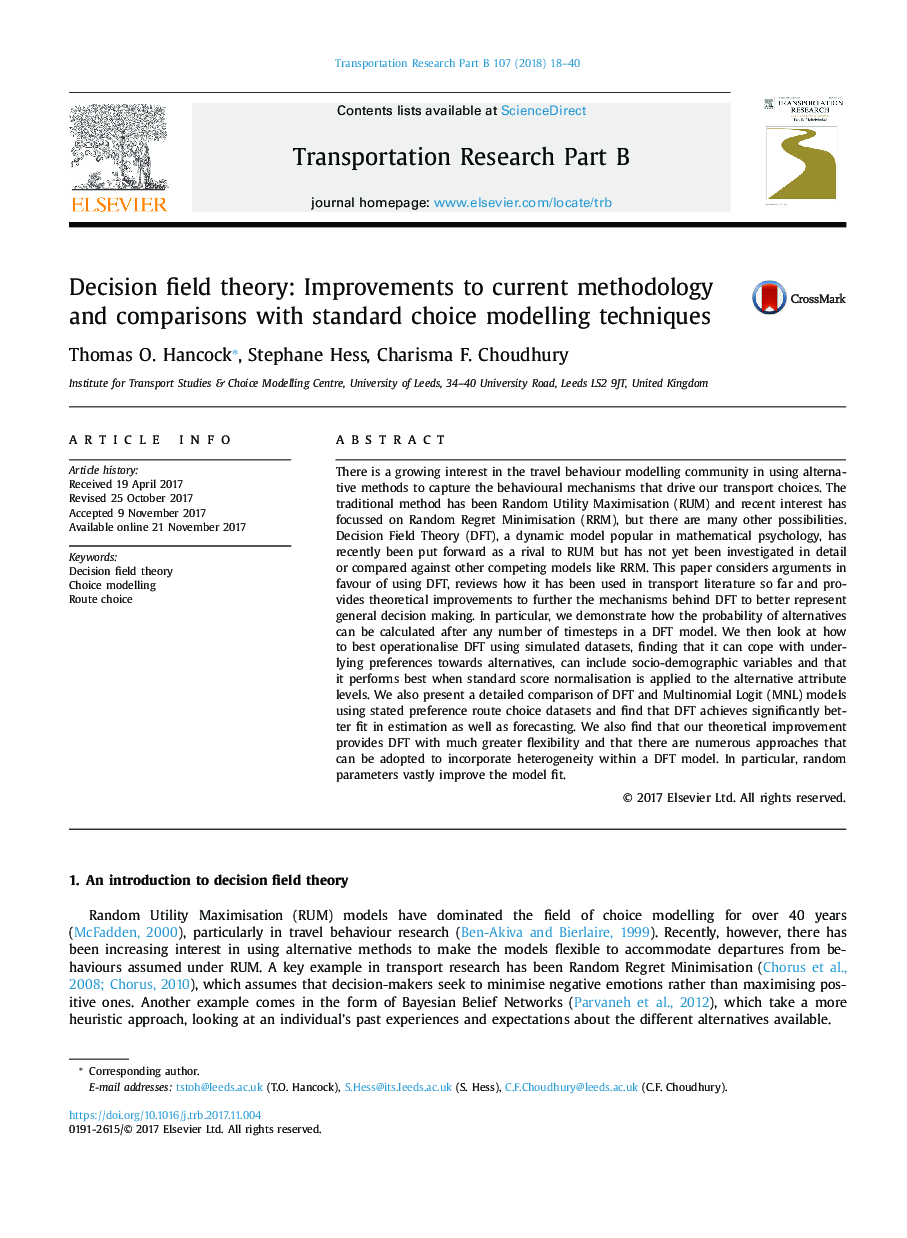| Article ID | Journal | Published Year | Pages | File Type |
|---|---|---|---|---|
| 7539253 | Transportation Research Part B: Methodological | 2018 | 23 Pages |
Abstract
There is a growing interest in the travel behaviour modelling community in using alternative methods to capture the behavioural mechanisms that drive our transport choices. The traditional method has been Random Utility Maximisation (RUM) and recent interest has focussed on Random Regret Minimisation (RRM), but there are many other possibilities. Decision Field Theory (DFT), a dynamic model popular in mathematical psychology, has recently been put forward as a rival to RUM but has not yet been investigated in detail or compared against other competing models like RRM. This paper considers arguments in favour of using DFT, reviews how it has been used in transport literature so far and provides theoretical improvements to further the mechanisms behind DFT to better represent general decision making. In particular, we demonstrate how the probability of alternatives can be calculated after any number of timesteps in a DFT model. We then look at how to best operationalise DFT using simulated datasets, finding that it can cope with underlying preferences towards alternatives, can include socio-demographic variables and that it performs best when standard score normalisation is applied to the alternative attribute levels. We also present a detailed comparison of DFT and Multinomial Logit (MNL) models using stated preference route choice datasets and find that DFT achieves significantly better fit in estimation as well as forecasting. We also find that our theoretical improvement provides DFT with much greater flexibility and that there are numerous approaches that can be adopted to incorporate heterogeneity within a DFT model. In particular, random parameters vastly improve the model fit.
Related Topics
Social Sciences and Humanities
Decision Sciences
Management Science and Operations Research
Authors
Thomas O. Hancock, Stephane Hess, Charisma F. Choudhury,
